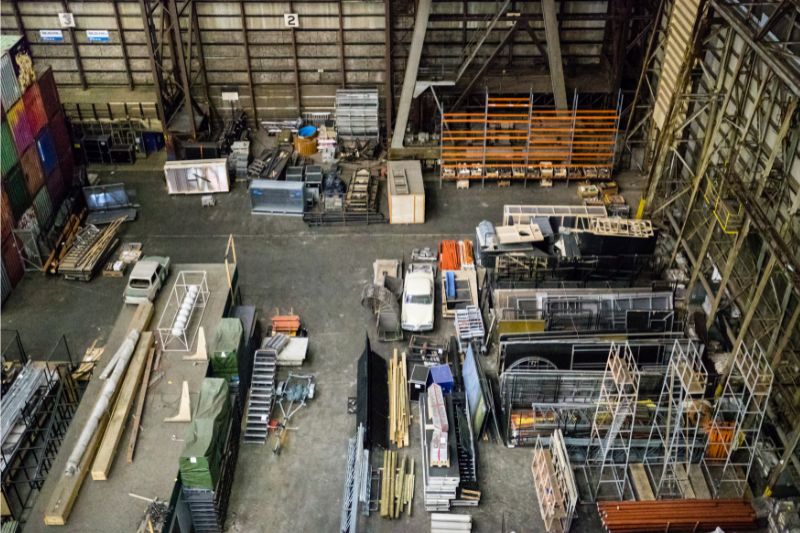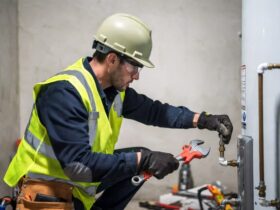No products in the cart.
Industry Facility Maintenance Secrets: 6 Tips to Boost Productivity

In any industry, facility maintenance plays a critical role in ensuring smooth operations and maximizing productivity. A well-maintained facility not only enhances the lifespan of equipment but also contributes to the overall efficiency of the workforce. In this blog, we will uncover six valuable tips that industry professionals can implement to boost productivity through effective facility maintenance. From developing comprehensive maintenance plans to embracing technology and automation, these secrets will empower businesses to achieve their goals while maintaining peak performance.
1. Create a Comprehensive Maintenance Plan
Creating a comprehensive maintenance plan is the foundation for effective facility maintenance. It involves developing a detailed roadmap that outlines the maintenance activities, schedules, and resources required to keep industrial equipment and systems in optimal condition. A well-designed plan considers the specific needs of the facility, the criticality of equipment, and the recommended maintenance practices from manufacturers and industry standards. Companies that invest in such plans can shift from a reactive approach to a proactive one, reducing the likelihood of unexpected breakdowns and costly downtime. By adhering to a comprehensive maintenance plan, businesses can ensure that equipment operates at peak performance, extend its lifespan, and ultimately enhance productivity in their operations.
2. Regular Equipment Inspections and Maintenance
Equipment lies at the heart of productivity in any industry facility. Regular equipment inspections and maintenance are crucial for ensuring the smooth and efficient operation of industrial facilities. The Tiger Material Handling, Inc. team understands the significance of keeping quality racking and storage systems and preventative maintenance in maximizing productivity and minimizing downtime. By conducting routine inspections and adhering to a well-planned maintenance schedule, businesses can identify potential issues early on and address them before they escalate into costly breakdowns. Regular maintenance also helps extend the lifespan of equipment, reducing the need for frequent replacements and associated expenses. By investing time and resources in maintaining their machinery, businesses can optimize performance, enhance safety, and ultimately boost productivity in their operations.
3. Invest in Training and Skill Development
A skilled and knowledgeable workforce is a valuable asset in facility maintenance. Investing in training and skill development for maintenance staff is a crucial step in boosting productivity in industrial facilities. Well-trained technicians are better equipped to identify and address maintenance issues efficiently, minimizing equipment downtime and disruptions to operations. Training programs can focus on equipment-specific maintenance, safety protocols, and emerging technologies to keep maintenance teams up-to-date with the latest industry practices. Additionally, ongoing skill development cultivates a sense of ownership and responsibility among employees, leading to increased engagement and motivation to excel in their roles. By investing in training and skill development, companies foster a more competent and confident maintenance workforce, ensuring that their facilities run smoothly and efficiently, ultimately leading to improved productivity and overall success.
4. Embrace Technology and Automation
Embracing technology and automation is a transformative approach to facility maintenance that can significantly enhance productivity. Incorporating software solutions, such as Computerized Maintenance Management Systems (CMMS), allows for streamlined maintenance tracking, scheduling, and reporting, making it easier to manage maintenance tasks and allocate resources effectively. Automation tools, such as sensors and data analytics, enable predictive maintenance by detecting equipment anomalies and predicting potential failures before they occur. This proactive approach minimizes unplanned downtime, reduces maintenance costs, and optimizes equipment performance. By leveraging technology and automation, businesses can modernize their maintenance practices, achieve higher levels of efficiency, and focus on strategic initiatives that drive growth and success.
5. Prioritize Safety and Risk Management
Prioritizing safety and risk management is paramount in facility maintenance to ensure the well-being of employees and the continuity of operations. By procuring ergonomic equipment, implementing robust safety protocols, and conducting thorough risk assessments, businesses can identify potential hazards and take proactive measures to mitigate risks. Adequate safety training and awareness programs equip maintenance staff with the knowledge and skills to perform their tasks safely, reducing the likelihood of workplace accidents and injuries. A safe work environment fosters a positive culture and boosts employee morale, leading to higher productivity and job satisfaction. By making safety a top priority, companies not only protect their workforce but also safeguard their reputation and financial stability, making it an essential aspect of successful facility maintenance.
6. Foster a Culture of Continuous Improvement
A culture of continuous improvement is vital to achieving long-term productivity goals. Encouraging employees to be proactive in suggesting maintenance enhancements and efficiency measures creates a sense of ownership and responsibility. Regular feedback sessions, brainstorming workshops, and open communication channels facilitate the exchange of ideas and innovative solutions. As employees feel valued and empowered, they become more engaged in facility maintenance, leading to increased productivity and a more positive work environment.
Effectively managing facility maintenance is a cornerstone of productivity in any industry. By creating comprehensive maintenance plans, investing in training, and embracing technology, businesses can enhance equipment reliability and reduce downtime. Prioritizing safety and implementing predictive maintenance techniques further strengthens maintenance efforts. Lastly, fostering a culture of continuous improvement ensures that facility maintenance evolves alongside changing business needs, leading to sustained productivity gains. By implementing these six maintenance secrets, industry professionals can unlock the full potential of their facilities and achieve new heights of productivity and success.















Leave a Reply